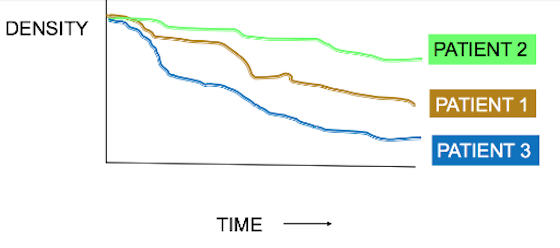Anabolic Steroids and Hair Loss: Is one month okay?
Anabolic steroids can cause hair loss in genetically susceptible individuals
Anabolic steroids are frequently used as training aids for men and women looking to increase muscle mass. This includes body builders and athletes at various levels. Many individuals are aware of the side effects of anabolic steroids and judge in their own minds whether the risks and benefits of using the drugs are worth it to them. These are known by a variety of names including stackers, gym candy, Arnolds, roids, juice. They are not uncommon - and some studies have suggested that even 4 % of high school students will have used anabolic steroids at least once. They are always on my radar.
Hair loss from anabolic steroids
There is no doubt that anabolic steroids can trigger a worsening of hair loss in some individuals. It does not happen to everyone but happens to those with the right genetic background. It can be mild or very marked hair loss. In my experience, there can also be a worsening of seborrheic dermatitis in these individuals as well.
How long is too long? 1 month? 2 months?
As patients weigh the risks and benefits of using anabolic steroids, I'm often asked questions such as:
How much is too much? How long is too long?
Is it 1 month? What about 2 months?
The short answer is that any amount can potentially be detrimental - but it all depends on one's underlying genetics and stage of hair loss. We can not accurately predict in the present day whether someone will experience negative hair loss related side effects. However, as I speak to patients about the duration of anabolic steroid use, I find it important to remind them that hairs don't work in months, they work in milli and microseconds. One month of steroid use is 2.5 million seconds - or as a hair would view it 2.5 Billion microseconds.
Does 2.5 Billion milliseconds of anabolic steroid use cause hair loss?
It's much easier to deal with the concept of hair loss occurring with 2.5 millions seconds of continuos exposure to anabolic steroids. While 1 month might not sound like much, 2.5 million does sound like a lot more.
Conclusion
Hair are made of proteins, which form cells. Cell don't work in months - they work in units of fractions of a second. In my clinical experience treating many individuals using anabolic steroids, short term use of anabolic steroids is sufficient to trigger hair loss in susceptible individuals.
This article was written by Dr. Jeff Donovan, a Canadian and US board certified dermatologist specializing exclusively in hair loss.








